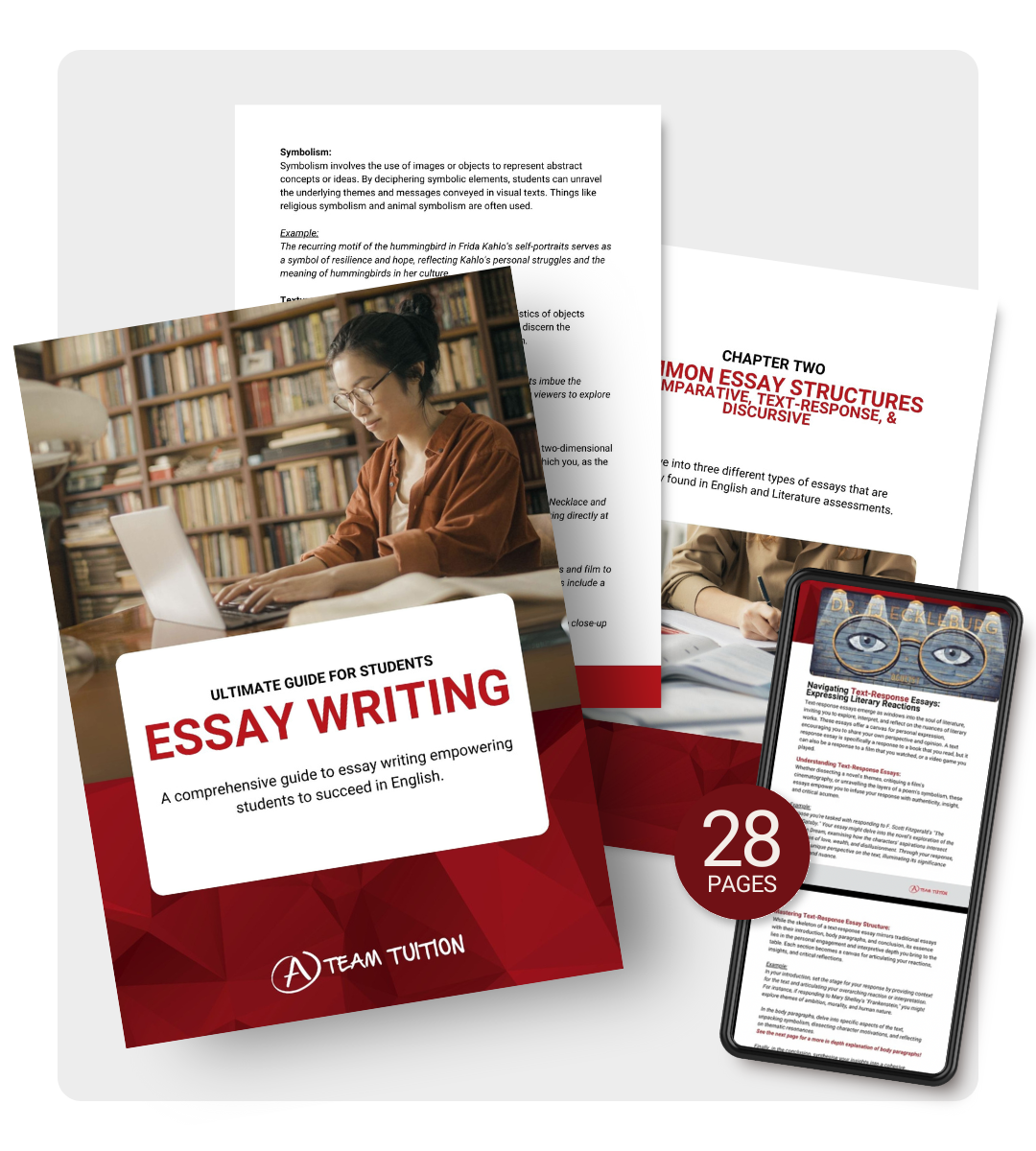Visual Techniques for English Essays: A Complete Guide
Visual techniques in English may be something you are familiar with, but it also may be completely new to you, and that’s okay! In HSC, QCE, ATAR, and other English curriculums, you have to use visual techniques to discuss images in books, videos, or book covers and analyse the visual and interpretation techniques within them, for meaning.
The visual techniques outlined in this article focus mainly on images rather than film clips as these are likely to come across in your external HSC system. Still, these techniques can easily be transferred to film clips.
What Are Visual Techniques in English?
Visual techniques are the elements of an image, video, or artwork that help to create meaning. They are used by different artists and creators for many reasons, but we analyse them to help us discern and create meaning from text when writing English essays.
Essential English Visual Techniques
Analysing visual techniques in your English essays is vital for success in your career as an English student. Many other things can help you get an A in English as well, but here we are focusing on breaking down different visual techniques. The different techniques are listed and expanded upon below.
1. Composition
Composition is what an image is made up of. This includes things like where an object is placed, how it is framed, and the colour and lighting techniques used. Composition broadly refers to the image as a whole and what you see when you look at it.
Using this in an essay could look like this: The Mona Lisa is a picture of a woman’s torso taking up the majority of the piece in front of a nature background.
2. Colour
Colour is the colours used in an image and what they can symbolise. Oftentimes different colours will evoke different emotions in the audience. For example, purple is a colour of royalty, wealth and luxury, whereas red represents passion, lust and anger.
Colour also includes the tone of the colour, if it is bright and vivid or dull and de-saturated. Using this in an essay could look like: The deep, saturated colours used in the Mona Lisa evoke feelings of calm and peace.
If you are a visual learner, you may already be using this without even knowing it! This could be through colour-coding different subjects or thoughts, or working better with diagrams and colours built into your notes.
3. Symbolism
Symbolism is the use of one object or image to represent another more complex concept. Things like religious symbolism and animal symbolism are often used.
Using this in an essay could look like: Frida Kahlo’s use of the hummingbird in Self Portrait with Thorn Necklace and Hummingbird symbolises hope in her culture.
4. Texture
Texture refers to the literal texture of an object. Is it rough or smooth? Does it have different ridges and feelings across the object?
Using this in an essay could look like: Van Gogh’s Starry Night has a heavy texture throughout the image.
5. Perspective
Perspective is how a three-dimensional object is placed on a two-dimensional surface. In artworks, perspective also changes the angle at which you, as the viewer, perceive the object.
Using this in an essay could look like: In Self Portrait with Thorn Necklace and Hummingbird, the viewer is placed in a front-on perspective, looking directly at Kahlo.
6. Lighting
Lighting is how an image is lit or not lit. This can include natural lighting like sunlight or open windows, man-made lighting like lamps or torches, or feature lighting like coloured lights or spotlights. Lighting has a major impact on the mood and atmosphere of a piece of art.
7. Framing
Framing includes the camera shots and angles used across images and film to foster differing audience reactions and emotions. These techniques include a close-up, extreme close-up, mid shots, aerial shots, and many more.
Using this in an essay could look like this: The artist uses an extreme close-up of the subject to create a feeling of tension and unease in the viewer.
8. Proportion and Scale
Proportion is the size of the different parts of an object in relation to each other. Scale is the size of one object to another in the same artwork.
Using this in an essay could look like: The artist uses realistic proportions across the image. The artist plays with scale to create a more surrealist feel in the image.
9. Point of View
Point of view refers to how the shot is framed in reference to the viewer or a character. For example, is the audience placed level with, above or below the subject of the image.
Using this in an essay could look like: The point of view in the image places the viewer looking down at the subject.
10. Text and Typography
Text and typography are the words used within an image to convey a literal or figurative message. This is influenced by the colour, size, and font of the text as well as its repetition throughout the image.
Using this in an essay could look like: The text within the image conveys both its literal message based on the words, and a subliminal message based on the wider context of the whole image.
Need extra help with English assignments?

Ready to take your visual analysis skills to the next level? Sign up for our English tutoring services today and get personalised guidance and support from experienced academic personal trainers.
Whether you need help with literary analysis, essay writing, or visual techniques in literature, our team is here to help you succeed. Contact us now to schedule your first session and start achieving your academic goals!


